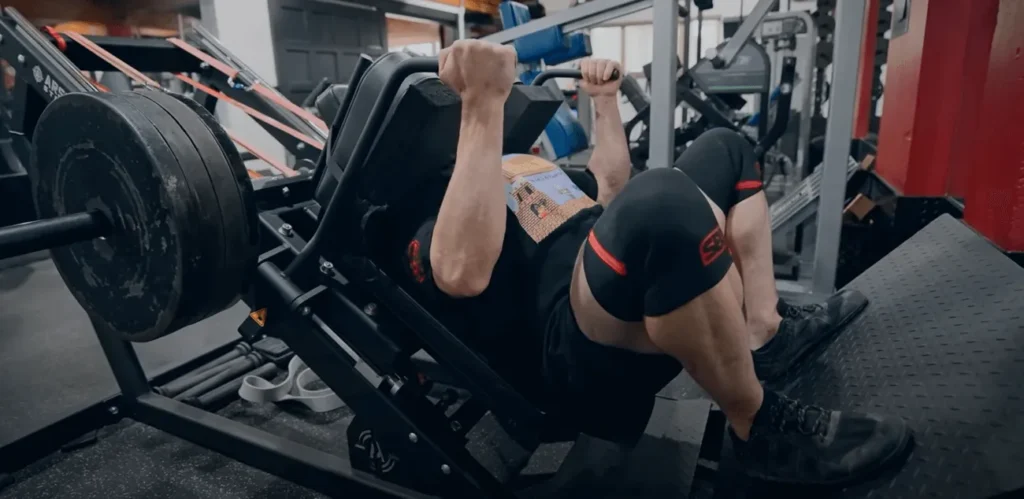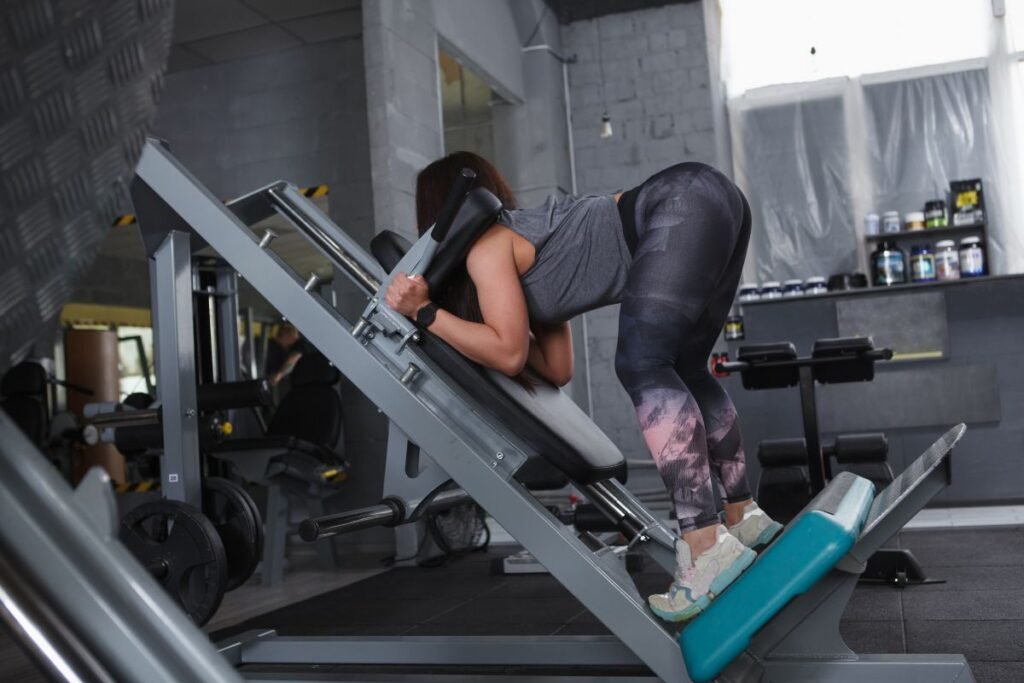
In the fitness world, the squat is one of the most effective exercises for strengthening and toning the legs, glutes and core muscles. However, within the wide range of squat variations, the hack squat often goes unnoticed.
If all this interests you, below we’ll talk in detail about the hack squat, its benefits, how to perform it correctly, and answer some frequently asked questions so you can incorporate this powerful exercise into your workout routine.
The hack squat, also known as the hack bar back squat, is a variation of the squat that is performed with a bar loaded behind the body, rather than in the front as in the traditional squat.
This exercise emphasizes the quadriceps, glutes and adductors, providing a unique stimulus for the development of these muscle areas.

The position of the bar behind the body in the hack squat allows for greater recruitment of the quadriceps. This helps develop strength and size in these major leg muscles.
Unlike the traditional squat, where the bar is placed in front of the shoulders, the hack squat places the load behind the body, which can reduce stress on the spine and lower back joints.

Although the quadriceps are the main muscle worked in this squat variation, this exercise also involves the glutes and hamstrings, which contributes to the balanced development of the legs and glutes.
The position of the bar behind the body requires greater control and stability, which can help improve balance and coordination during the exercise.
Initial Position:
Descent:
Ascent:
Repetition:
Perform the desired number of repetitions, maintaining proper form throughout.
If you still have any doubts you can count on a fitness professional to guide you. You can request your own personalized training program with hack squats included.
Creditos: Renaissance Periodization
Yes, the hack squat can be performed by beginners with proper supervision and starting with light weights. It is important to master the technique before increasing the load.
The main difference between the hack squat and the traditional squat lies in the position of the bar. In the hack squat, the bar is placed behind the body, while in the traditional squat it is placed in front of the shoulders.
If you have back problems, it is important to consult with a health care professional or personal trainer before performing the hack squat. It may be necessary to modify the exercise or choose safer alternatives.
Yes, it is an effective exercise for strengthening leg muscles, including the quadriceps, glutes and hamstrings. By performing this exercise correctly and with proper resistance, significant benefits for leg muscle development can be obtained.
Although performed with a barbell placed behind the body, no specialized equipment is necessary. However, some people may find it useful to use a specific machine to perform this exercise more safely and comfortably.
To perform it correctly, place a barbell behind your body, holding it with your hands behind your thighs.
Keep your feet shoulder-width apart and lower your body towards the floor by bending your knees and hips, keeping your back straight. Then, return to the starting position by extending your legs and hips.
Yes, it can also contribute to improved core strength and stability, as it requires active engagement of the abdominal and lumbar muscles to maintain proper posture during movement.
This can be beneficial for sports performance and injury prevention.
Now you know a little more about this exercise, write me in the comments if you usually add this exercise in your routine or plan to do it.
I remind you that my name is Ignacio, I have a degree in Sports Science and if you need advice I have a complete program to get in shape.

Bachelor of Sports Science
Personal Trainer - Fitmind Academy